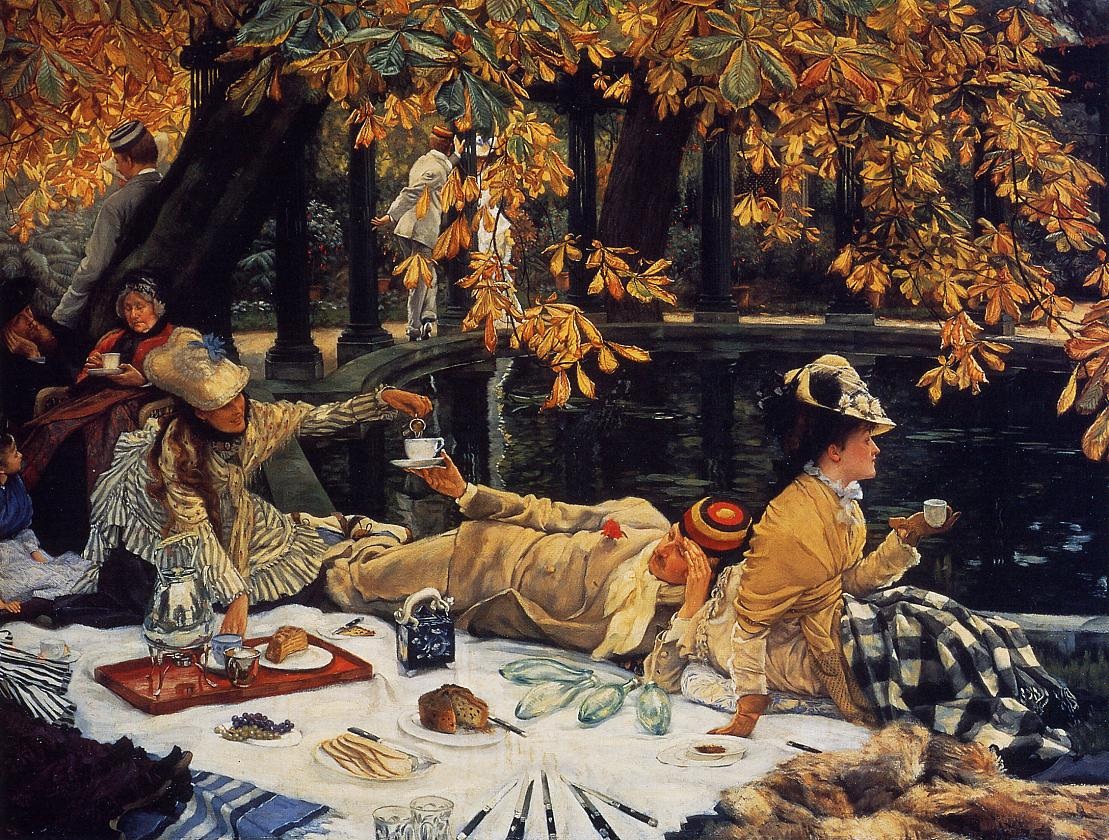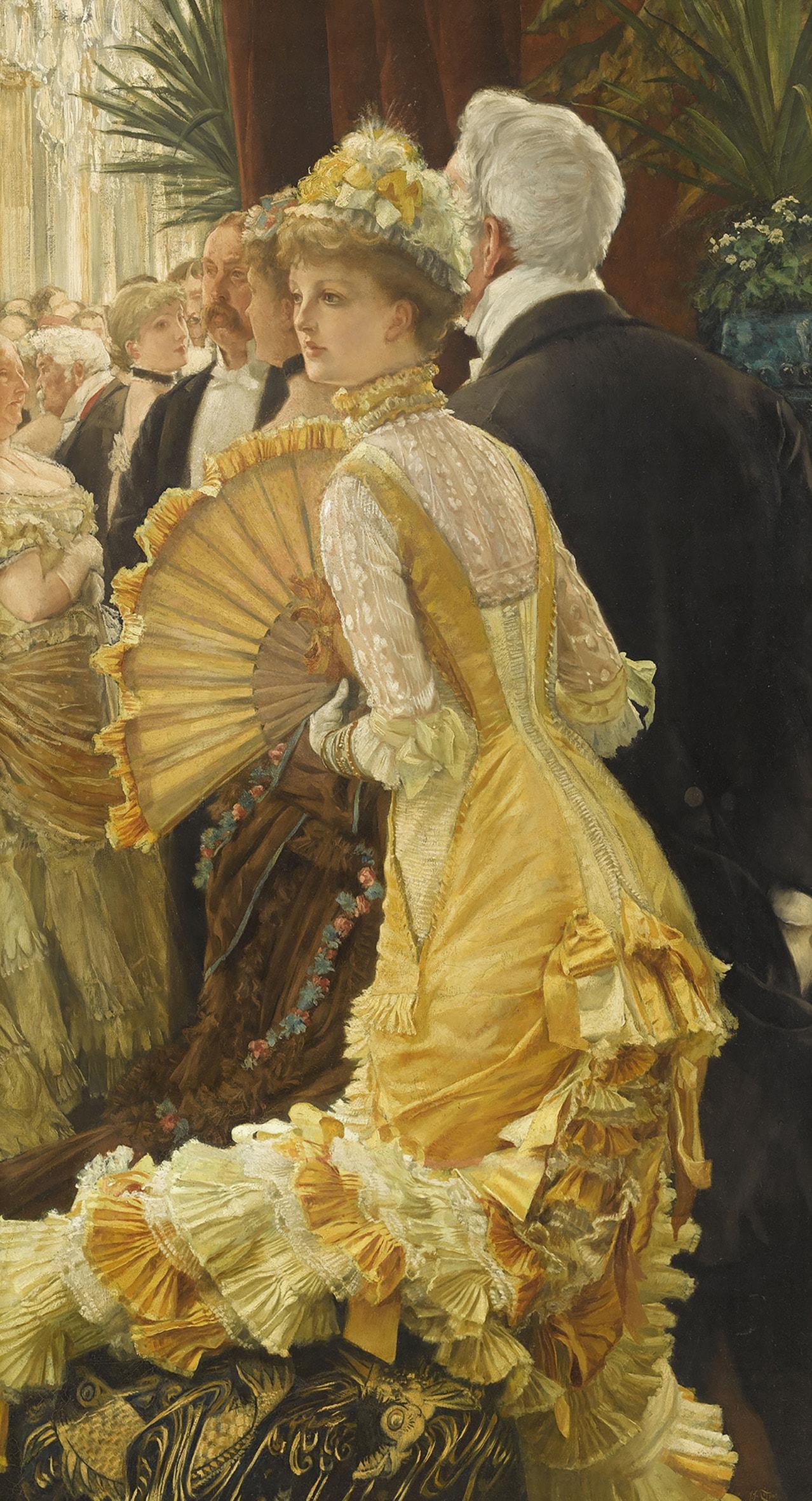To cite this article: Paquette, Lucy. “The James Tissot Tour of Paris.” The Hammock. https://thehammocknovel.wordpress.com/2015/10/15/the-james-tissot-tour-of-paris/. <Date viewed.>

Enjoying a view of the Arc de Triomphe
One hundred seventy-nine years ago today, French painter James Tissot was born. And three years ago, I published my book, The Hammock: A novel based on the true story of French painter James Tissot.
I’m just back from a two-week vacation in Paris, and it was Paradise. I’d been there twice before — a long time ago, when I was in college studying art history — and after I’d studied French for a decade. This was my first visit since then, and with my conversational French gradually returning, I played tour guide for my husband, who’s never seen Paris. We went everywhere and did everything, and I’m still jet-lagged, but I made a point of going to numerous places associated with James Tissot, and I want to share some sights with you via my personal photos.
By 1865, Emperor Napoléon III’s majestic and “revolution-proof” vision to modernize Paris had been methodically implemented for twelve years by his préfet, Baron Haussmann. James Tissot, an art student from the seaside port of Nantes, had lived in the Latin Quarter and painted in the capital since 1856 — coming of age during this transformation. The economy was booming as overcrowded medieval buildings were demolished, hills were leveled, bridges were constructed, and narrow, winding streets were replaced with straight, broad, tree-lined avenues extending to the western suburbs where fields of cabbages once grew.
When the Arc de Triomphe was completed in 1836, five streets radiated from it; Haussmann added seven more and a traffic round-about, and it became known as Place de l’Etoile (Place of the Star). In an effort to create a clean and progressive metropolis, rows of neo-classical apartment buildings were constructed with shops at street level, as well as a breathtakingly beautiful new opera house, the Opéra Garnier.

Opéra Garnier, Paris. (Photo: Wikimedia.org, because I couldn’t get a shot that was not obstructed by tour buses!)

Rue Bonaparte [near Église de St-Germain-des-Prés], where Tissot rented an apartment from about 1860 to 1867 at no. 39. Writer Alphonse Daudet (1840 – 1897) lived in the room below him and recorded his own disappointment that the house later was demolished.

The entrance to the private cul-de-sac [now Square de l’avenue Foch], where James Tissot’s opulent Paris villa once stood.
Between 1850 and 1870, the population of Paris nearly doubled as the provincial population flocked to the capital. James Tissot was part of the rise of a wealthy urban class.
By late 1867 or early 1868, he moved into the sumptuous mansion he had built in a cul-de-sac off the west end of this avenue, Square de l’avenue de l’Impératrice [now Square de l’avenue Foch, with a gated entrance]. When Tissot visited London in 1862, he had particularly admired English buildings and gardens. He built his Paris home as “an English-style villa,” high on a basement ground floor, with a first floor and a second floor with a terrace above, a courtyard and small garden.
Tissot’s villa no longer stands, but just across avenue Foch at no. 59, the Musée d’Ennery operates in an 1875 townhouse that gives some idea of the grandeur of the era’s homes there.
As I walked the old narrow, crooked and crowded streets of the Left Bank where Tissot started his career in Paris and the wide, new, straight avenues of the Right Bank where he lived after he had “arrived,” I was struck by his journey from striving student to wealthy and established Second Empire painter living in luxury and privacy.
One of the most beautiful and serene places we visited in Paris was the Parc Monceau with its classical colonnade — which Tissot copied in cast iron in the garden of his home in London, upon his move there following the Franco-Prussian War and its bloody aftermath, the Commune.
Tissot used his graceful colonnade as a backdrop for paintings including Quarrelling (c. 1874), The Convalescent (c. 1876), Holyday (c. 1876), and The Hammock (1879).

Quarrelling (c. 1874), by James Tissot. Oil on canvas. Private Collection. (Photo: Wikiart.org)

The Convalescent (c. 1876), by James Tissot. Oil on canvas. Museums Sheffield. Courtesy of The Bridgeman Art Library for use in “The Hammock: A novel based on the true story of French painter James Tissot” by Lucy Paquette © 2012.

Holyday (c. 1876), by James Tissot. Oil on canvas. Tate Britain, London. (Photo: Wikimedia.org)

The Hammock (1879), by James Tissot. Oil on canvas. Private Collection. Image courtesy of The Bridgeman Art Library for use in “The Hammock: A novel based on the true story of French painter James Tissot,” © 2012 by Lucy Paquette
The handsome chestnut trees that Tissot painted from his London garden were evident throughout Paris, and their autumnal leaves are exactly as he portrayed them.
The outbreak of the Franco-Prussian War in July, 1870 brought an abrupt halt to this glamorous and leisured life.

The artillery encamped in the Tuileries garden in late September 1870 by Henri Brunner-Lacoste and Alfred Decaen. Musée Carnavalet, Paris.
 You can see James Tissot’s paintings in museums all over the world, but many of the most gorgeous works he produced in Second Empire Paris are showcased at the Musée d’Orsay, including The Two Sisters (1863), Portrait of the Marquis and Marchioness of Miramon and their children (1865), and The Circle of the Rue Royale (1868).
You can see James Tissot’s paintings in museums all over the world, but many of the most gorgeous works he produced in Second Empire Paris are showcased at the Musée d’Orsay, including The Two Sisters (1863), Portrait of the Marquis and Marchioness of Miramon and their children (1865), and The Circle of the Rue Royale (1868).
The collection also includes paintings that were not on display during my visit, such as The Meeting of Faust and Marguerite (1860) and Portrait of Miss L. L. (1864). A rather sad portrait of Kathleen Newton, Tissot’s young mistress, The Dreamer (or, Summer Evening, c. 1876) was on display, as well as the shimmering, idealized portrait of Mrs. Newton that Tissot painted four years before her death of tuberculosis in 1882, Evening (Le Bal, c. 1878).

The Dreamer (or, Summer Evening, c. 1876), by James Tissot. Oil on canvas. Musée d’Orsay.

Le bal (Evening, 1878), by James Tissot. Oil on canvas. Musée d’Orsay. (Photo: Wikimedia.org)
I also was able to see the controversial new exhibition at the Musée d’Orsay, “Splendor and Misery: Pictures of Prostitution, 1850-1910.” It is huge — all-encompassing, to put it mildly, as it explores the underside of Paris life during these decades. Tissot’s The Shop Girl from his series, La Femme à Paris (Women of Paris) is included, and it was a rare chance to see it up close (though in a darkened room). It is vibrant and beautifully detailed, with a lot going on — the idea being, the goods on display in the shop are not the only things for sale.
Note: “Splendor and Misery” runs until January 17, 2016. It will then move to the Van Gogh museum in Amsterdam.

The Shop Girl (1883 – 1885), by James Tissot. Oil on canvas. Art Gallery of Ontario, Toronto, Canada. (Photo: Wikimedia.org)
C’est tout! Thanks for taking this little tour of Tissot’s Paris with me, and if you enjoy this blog, you’ll be captivated by The Hammock: A novel based on the true story of French painter James Tissot. (Amazon offers free apps for your laptop, smartphone and tablet if you don’t have a Kindle — see the information below!) Read reviews.
Related posts:
On his own: Tissot as a Paris art student, 1855 — 1858
Paris c. 1865: The Giddy Life of Second Empire France
The high life, 1868: Tissot, his villa & The Circle of the Rue Royale
A spotlight on Tissot at the Met’s “Impressionism, Fashion, and Modernity”
A visit to James Tissot’s house & Kathleen Newton’s grave
The James Tissot Tour of Victorian England
© 2015 by Lucy Paquette. All rights reserved.
The articles published on this blog are copyrighted by Lucy Paquette. An article or any portion of it may not be reproduced in any medium or transmitted in any form, electronic or mechanical, without the author’s permission. You are welcome to cite or quote from an article provided you give full acknowledgement to the author.
 If you do not have a Kindle e-reader, you may download free Kindle reading apps for PCs, Smartphones, tablets, and the Kindle Cloud Reader to read The Hammock: A novel based on the true story of French painter James Tissot. Read reviews.
If you do not have a Kindle e-reader, you may download free Kindle reading apps for PCs, Smartphones, tablets, and the Kindle Cloud Reader to read The Hammock: A novel based on the true story of French painter James Tissot. Read reviews.
The Hammock: A novel based on the true story of French painter James Tissot, brings Tissot’s world from 1870 to 1879 alive in a story of war, art, Society glamour, love, scandal, and tragedy.
Illustrated with 17 stunning, high-resolution fine art images in full color
Courtesy of The Bridgeman Art Library
(295 pages; ISBN (ePub): 978-0-615-68267-9). See http://www.amazon.com/dp/B009P5RYVE.
The Hammock: A novel based on the true story of French painter James Tissot is now available as a print book – a paperback edition with an elegant and distinctive cover by the New York-based graphic designer for television and film, Emilie Misset.





